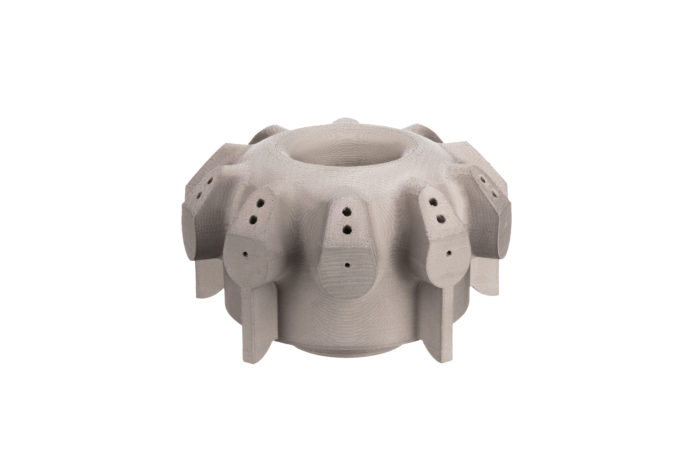It’s almost been a century that John Zink has been building emissions control and clean air combustion systems which are used by production facilities around the world. These emissions control and clean air combustion aim to meet to emission requirements.
Like in all activities, over time, new issues happened and needed to be addressed with new solutions. Surprisingly, in this field of activity, customers also have specific requirements they would like to meet. For this reason, the Oklahoma (USA)-based company has invested in metal 3D printing technology to produce parts that are engineered-to-order and optimized for each customer’s specific application.
It’s been several months already that the team at John Zink has been working with the Desktop Metal Studio System and there are several things they can already do-in-house that they did not do before purchasing the 3D Printer. This includes testing different iterations of prototype designs faster; printing parts in-house and creating new part designs.
For a long time, the team knew they needed to use atomizers to improve the fuel-air mix inside burners in order to help their customers reduce their environmental footprint. As the Studio System is a good candidate for rapid prototyping and low volume production, they tested several options before finding the perfect design featuring sweeping, airfoil-like fins.
The new design achieved thanks to freedom of 3D printing allows them to produce the part with flat openings instead drilling round holes, resulting this way in better atomization and burner efficiency.
“Where the previous design was able to reduce fuel use to 120 kilograms per hour, the new design cut fuel use to just 38 kilograms per hour. With three burners per ship, the environmental impact across an entire fleet can be huge. The savings can be equally significant – per ship, the new atomizer could save companies between $90,000 and $160,000 in fuel costs annually, and can be produced in few days for less than half the cost of a traditionally manufactured fuel atomizer”, John Zink told Desktop Metal.
Other parts including burner tips, laser gas nozzle, machine tool handles, shutoff yoke and handles that couldn’t be produced via conventional manufacturing processes because they require both time and money can now be printed with Desktop Metal’s technology and this is just the beginning.
“The Studio System has proven to be a useful tool for our designers and engineers, enabling innovative new designs for existing parts, the recreation of legacy components and the production of manufacturing aids that improve efficiency,” said Jason Harjo, Design Manager, John Zink. “As our designers and engineers continue to explore the possibilities of metal 3D printing, they expect to continue to find new applications for the system, whether to prototype new parts or develop new manufacturing aids.”
Remember, you can post AM job opportunities for free on 3D ADEPT Media or look for a job via our job board. Make sure to follow us on our social networks and subscribe to our weekly newsletter: Facebook, Twitter, LinkedIn & Instagram! If you want to be featured in the next issue of our digital magazine or if you hear a story that needs to be heard, make sure to send it to contact@3dadept.com






